And,with all inconsistencies and freedoms,there is a power shown in these sequences of cuts:a power of joining on one action or one humour to another;a power of following out the moods,even of the dismal subterhuman fiends engendered by the artist's fancy;a power of sustained continuous realisation,step by step,in nature's order,that can tell a story,in all its ins and outs,its pauses and surprises,fully and figuratively,like the art of words.
One such sequence is the fight of Christian and Apollyon -six cuts,weird and fiery,like the text.The pilgrim is throughout a pale and stockish figure;but the devil covers a multitude of defects.There is no better devil of the conventional order than our artist's Apollyon,with his mane,his wings,his bestial legs,his changing and terrifying expression,his infernal energy to slay.In cut the first you see him afar off,still obscure in form,but already formidable in suggestion.Cut the second,'The Fiend in Discourse,'represents him,not reasoning,railing rather,shaking his spear at the pilgrim,his shoulder advanced,his tail writhing in the air,his foot ready for a spring,while Christian stands back a little,timidly defensive.The third illustrates these magnificent words:'Then Apollyon straddled quite over the whole breadth of the way,and said,I am void of fear in this matter:prepare thyself to die;for I swear by my infernal den that thou shalt go no farther:here will Ispill thy soul!And with that he threw a flaming dart at his breast.'In the cut he throws a dart with either hand,belching pointed flames out of his mouth,spreading his broad vans,and straddling the while across the path,as only a fiend can straddle who has just sworn by his infernal den.
The defence will not be long against such vice,such flames,such red-hot nether energy.And in the fourth cut,to be sure,he has leaped bodily upon his victim,sped by foot and pinion,and roaring as he leaps.The fifth shows the climacteric of the battle;Christian has reached nimbly out and got his sword,and dealt that deadly home-thrust,the fiend still stretched upon him,but 'giving back,as one that had received his mortal wound.'The raised head,the bellowing mouth,the paw clapped upon the sword,the one wing relaxed in agony,all realise vividly these words of the text.In the sixth and last,the trivial armed figure of the pilgrim is seen kneeling with clasped hands on the betrodden scene of contest and among the shivers of the darts;while just at the margin the hinder quarters and the tail of Apollyon are whisking off,indignant and discounted.
In one point only do these pictures seem to be unworthy of the text,and that point is one rather of the difference of arts than the difference of artists.Throughout his best and worst,in his highest and most divine imaginations as in the narrowest sallies of his sectariani**,the human-hearted piety of Bunyan touches and ennobles,convinces,accuses the reader.Through no art beside the art of words can the kindness of a man's affections be expressed.In the cuts you shall find faithfully parodied the quaintness and the power,the triviality and the surprising freshness of the author's fancy;there you shall find him out-stripped in ready symbolism and the art of bringing things essentially invisible before the eyes:but to feel the contact of essential goodness,to be made in love with piety,the book must be read and not the prints examined.
Farewell should not be taken with a grudge;nor can I dismiss in any other words than those of gratitude a series of pictures which have,to one at least,been the visible embodiment of Bunyan from childhood up,and shown him,through all his years,Great-heart lungeing at Giant Maul,and Apollyon breathing fire at Christian,and every turn and town along the road to the Celestial City,and that bright place itself,seen as to a stave of music,shining afar off upon the hill-top,the candle of the world.













